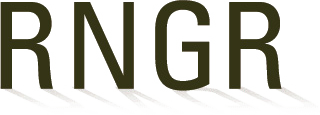
Asclepias (cordifolia)
|
Margaret Smither-Kopperl Manager USDA NRCS - Lockeford Plant Materials Center PO Box 68 Lockeford, California 95237 209 867 3103 margaret.smither-kopperl@ca.usda.gov http://plant-materials.nrcs.usda.gov/capmc |
|
| Family Scientific Name: | Asclepiadaceae | ||
|---|---|---|---|
| Family Common Name: | Milkweed | ||
| Scientific Name: | Asclepias cordifolia (Benth.) Jeps. | ||
| Common Name: | Heart-leaf milkweed, purple milkweed | ||
| Species Code: | ASCO | ||
| Ecotype: | northern California | ||
| General Distribution: | Western United States (California, Nevada, Oregon). Grows between 50-2000 meter elevation in the northern Sierra and Cascade ranges. | ||
| Propagation Goal: | Plants | ||
| Propagation Method: | Seed | ||
| ProductType: | Container (plug) | ||
| Stock Type: | Container plugs (1”x 1” x 2”) and deep-pots (DPs, 1.5”x 1.5” x7”) | ||
| Time To Grow: | Peak germination for all treatments occurred within 25-32 days after planting | ||
| Target Specifications: | Healthy seedlings with a well-developed main stem and root mass filling the container | ||
| Propagule Collection: |
Seed was hand collected from two different counties in northern California. A majority of the seed came from a single, large patch of milkweed growing at approximately 2,000 ft elevation and northeast facing slopes in Napa County, CA. The soil at this collection site is classified as Boomer-Forward-Felta complex (gravelly or very gravelly loam) with 5 to 30 percent slopes. This seed was collected on 7/14/22. A small amount of seed came from Folsom Lake Recreation Area in El Dorado, CA. The soil at this collection site was classified as either Andregg coarse sandy loam, rocky, 2 to 15 percent slopes or Andregg-Rock outcrop complex, 5 to 30 percent slopes, and had very high granite content. This seed was collected on 7/15/22. The seedpods for both collections were beginning to brown and dry but had not yet split at the time of collection. |
||
| Propagule Processing: | Pods were allowed to finish drying for approximately 10 days after collection, at which point all pods had split. The seed from the two collections was combined, hand cleaned by picking the seed out from the chaff and stored in a paper bag in the refrigerator for approximately 6 ½ months. | ||
| Pre-Planting Treatments: |
Seed was removed from the refrigerator and soaked in room temperature water for 24 hrs, followed by cold stratification in damp vermiculite for 66 days. Seed was direct-sowed in two different sized containers with two different soil mixes, as described in the ‘Other Comments’ section below. Seed was sown in late April and kept in an unheated greenhouse for the first two weeks, and then moved to a lath house for the remaining four weeks of the trial. Data on germination and seedling height was collected on a weekly basis for 6 weeks. The best results (highest germination and seedling growth) were from the following treatment (‘T4’): Seeds were sown directly at ¼ - ½” depth into ‘deep pots’ (‘DPs’), which were 1.5” in diameter and 7” deep. The soil mix consisted of 70% standard seed and transplant potting soil, 15% decomposed granite and 15% volcanic rock. The average germination rate was 80% and average seedling height at the end of the trial was 6.2 cm. Root development and seedling health and vigor were both classified as ‘very good’ (4 on a scale of 1-5) at the end of the trial. |
||
| Other Comments: |
Three additional treatments were utilized as part of these propagation trials, but none were as successful as T4, described above. The additional treatments were: T1: Standard seed and transplant potting soil. Seed sown directly into 1”x1”x2” plugs. Average germination rate = 34%. T2: Augmented soil mix; 70% standard seed and transplant potting soil, 15% decomposed granite, 15% volcanic rock. Seed sown directly into 1”x1”x2” plugs. Average germination rate = 51% T3: Standard seed and transplant potting soil. Seed sown directly into 1.5”x7” DPs. Average germination = 74%. |
||
| References: | Calflora and USDA PLANTS | ||
Citation:
Smither-Kopperl, Margaret; Edwards, Annie; Kay-Cruz, Jessa. 2023. Propagation protocol for production of Container (plug) Asclepias cordifolia (Benth.) Jeps. Plants Container plugs (1”x 1” x 2”) and deep-pots (DPs, 1.5”x 1.5” x7”); USDA NRCS - Lockeford Plant Materials Center Lockeford, California. In: Native Plant Network. URL: https://NativePlantNetwork.org (accessed 2025/11/03). US Department of Agriculture, Forest Service, National Center for Reforestation, Nurseries, and Genetic Resources.



